Facebook Ads Specialist in Mumbai
What are Facebook Ads?
Facebook Ads are a form of paid advertising on the Facebook platform. They allow businesses and individuals to create and target ads to specific audiences based on demographics, interests, behavior, and more. Facebook Ads can appear in users’ News Feeds, on the right column of the desktop site, and across various placements on mobile devices. Advertisers can set budgets, bid for ad placements, and track the performance of their ads through Facebook’s Ad Manager.
Determining the cost of advertising on Facebook involves various factors:
- Audience targeting: Narrow audiences often incur higher costs compared to broader ones.
- Ad placement: Costs may vary between ads displayed on Facebook and Instagram.
- Campaign duration: The longer a campaign runs, the greater the impact on the overall cost.
- Competitiveness of your industry: Higher competition in your industry generally leads to increased ad costs.
- Time of year: Seasonal fluctuations, holidays, or industry-specific events can influence ad costs.
- Time of day: Costs per click (CPC) tend to be lowest between midnight and 6 am in any timezone.
- Location: Ad costs can differ significantly by country.
Considering these factors and adjusting your strategy accordingly can help optimize your Facebook advertising budget for the best results.
Setting campaign costs according to objectives
Selecting the appropriate campaign objective is paramount for effective control of Facebook ad costs and a higher likelihood of success.
Cost-per-click benchmarks fluctuate based on the chosen campaign objective. You can choose from five core objectives:
- Conversions
- Impressions
- Reach
- Link Clicks
- Lead Generation
Ensuring alignment between your campaign goal and chosen objective is key to optimizing costs and maximizing the impact of your Facebook advertising efforts.
Types of facebook ads
Facebook offers various types of ads to cater to different marketing objectives. Some common types include:
- Image Ads: Basic ads featuring a single image to convey your message.
- Video Ads: Engaging ads that use video content to capture attention and convey your brand or product.
- Carousel Ads: Allows showcasing multiple images or videos in a single ad, each with its own link.
- Slideshow Ads: A lightweight alternative to video, combining images and sound to create a compelling ad.
- Collection Ads: Ideal for mobile shopping experiences, displaying products in a grid format that users can click to learn more.
- Instant Experience (formerly Canvas) Ads: Immersive, full-screen mobile experiences that load instantly, combining images, videos, and text.
- Lead Generation Ads: Designed to collect lead information within the ad, making it easier for users to express interest.
- Messenger Ads: Appear directly in users’ Messenger inbox, enabling direct conversations with potential customers.
- Dynamic Ads: Automatically show different products or content to users who have visited your website or app.
- Story Ads: Full-screen ads that appear in the Stories section of Facebook, Instagram, or Messenger, providing a visually engaging format.
These options offer flexibility for advertisers to choose the format that best suits their goals and target audience.
Here are each of Facebook’s ad formats explained in more detail:
Image ads
Image ads serve as Facebook’s fundamental ad format, enabling businesses to showcase their products, services, or brand with a single compelling image. They offer versatility across various ad types, placements, and aspect ratios.
Best suited for campaigns with visually impactful content that can be effectively conveyed in a single image, whether through illustrations, design, or photography. These ads are straightforward to create and can effectively communicate your message when using high-quality imagery.
Ideal for any stage of the sales funnel, from boosting brand awareness to promoting new product launches for increased sales.
However, it’s important to note that the single-image format may be limiting if you need to showcase multiple products or demonstrate how your product works. In such cases, exploring other ad formats might be more suitable for a comprehensive message delivery.
Video Ads
Video ads on Facebook are a dynamic and impactful tool for storytelling. With the ability to feature engaging visuals and compelling narratives, video ads capture attention effectively. The versatility of video length allows for concise, attention-grabbing content, making them suitable for various campaign objectives such as brand awareness, engagement, or conversions. These ads enable businesses to direct users to specific destinations and are optimized for mobile viewing, recognizing the mobile-centric nature of Facebook users. Including a clear call-to-action enhances user interaction, and experimenting with different video content helps identify what resonates best with your audience. Video ads offer a powerful means to convey messages and connect with your target audience on the Facebook platform.
Carousel Ads
Carousel ads on Facebook provide a visually engaging format by allowing businesses to showcase multiple images or videos within a single ad. Users can swipe through the carousel to view different content pieces, each with its own link. This format is ideal for telling a more comprehensive story, featuring various products, or highlighting different aspects of a single offering. Carousel ads offer a creative way to capture audience attention and encourage interaction, making them effective for diverse marketing goals.
Instant Experiences ads
Instant Experience ads, formerly known as Canvas ads, on Facebook deliver immersive, full-screen mobile experiences for users. These ads load instantly, combining images, videos, and other multimedia elements to create an engaging and interactive environment. Instant Experience ads are designed to captivate users with a visually rich and seamless storytelling experience. They offer businesses an effective way to showcase products, tell compelling brand stories, and drive user engagement. This mobile-friendly ad format aims to provide a frictionless and captivating journey for users within the Facebook platform.
Collection Ads
Collection ads on Facebook present a visually compelling format for businesses to showcase their products. These ads feature a primary image or video above a curated collection of related items, creating an engaging shopping experience. Users can tap on individual products within the collection to learn more or make a purchase, seamlessly integrating the browsing and shopping processes. Collection ads are designed to enhance the mobile shopping experience, providing a user-friendly and immersive way for businesses to feature their products and drive conversions on the Facebook platform.
Lead Ads
Lead ads on Facebook streamline the process of collecting valuable user information. These ads feature pre-filled forms with user details, such as names and email addresses, making it easy for people to express interest or sign up for more information without leaving the platform. Lead ads are particularly effective for generating leads, whether for newsletters, promotions, or other marketing initiatives. They simplify the user experience, reducing friction in the conversion process and offering businesses an efficient way to gather potential customer information directly through the Facebook platform.
Slideshow Ads
Slideshow ads on Facebook provide a lightweight yet visually engaging alternative to traditional video content. Composed of a series of images or video stills, these ads play in a slideshow format, offering a dynamic and attention-grabbing way to convey a message. Slideshow ads are designed to load quickly, even in areas with slower internet connections, making them accessible to a broader audience. This format is particularly effective for businesses aiming to showcase their products or tell a story through a visually compelling sequence, providing an impactful and accessible advertising solution on the Facebook platform.
Stories Ads
Stories ads on Facebook offer a captivating and immersive full-screen experience within the Stories section of the platform. These visually dynamic ads allow businesses to share engaging content, combining images or videos with a vertical format optimized for mobile viewing. With a focus on creative storytelling, Stories ads provide a seamless way to connect with users in a format that feels native to the platform. Whether for brand promotion, product launches, or interactive experiences, Stories ads enable businesses to leverage the popularity of ephemeral content and reach a wide audience through the Facebook ecosystem.
Messenger Ads
Messenger ads on Facebook appear directly in users’ Messenger inboxes, providing a direct and interactive channel for businesses to connect with their audience. These ads enable seamless communication and engagement, allowing users to initiate conversations with the business. Whether it’s promoting products, providing customer support, or delivering personalized content, Messenger ads facilitate direct interaction within the messaging platform. With a focus on building relationships and fostering user engagement, Messenger ads offer businesses a unique opportunity to connect with their audience in a more personalized and conversational manner on the Facebook platform.
Conclusion
In conclusion, Facebook ads offer a diverse array of formats to suit various marketing goals, providing businesses with a dynamic platform to connect with their audience. From the simplicity of image ads to the immersive experiences of video and Instant Experience ads, the flexibility is immense. To navigate this landscape effectively and harness the full potential of Facebook advertising, businesses can benefit from expert insights and tailored solutions. For specialized guidance and strategies, consider exploring the valuable resources available on the 46Solution website, ensuring your campaigns are optimized for success in the dynamic realm of Facebook advertising.
Latest From Blog
Fusce dignissim blandit justo, eget elementum risus tristique. Nunc lacus lacus, sit amet accumsan est pulvinar non. Praesent tristique enim lorem.

